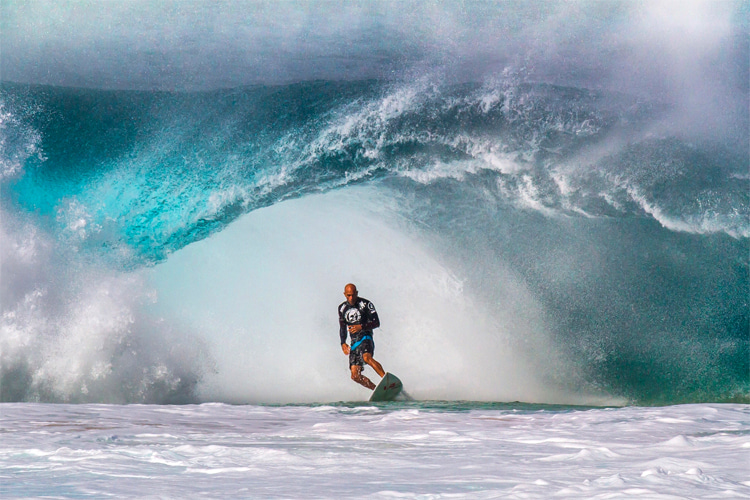It consistently produces one of the world's biggest, heaviest, and most dangerous waves, and it's often deemed a surfer's ultimate proving ground. Here's everything you must know about Pipeline, the mother of all waves.
Pipeline is Hawaii's signature wave and one of the archipelago’s Crown Jewels, and it's easy to understand why.
It’s steep, hollow, fast, intense, and ruthless; it can simultaneously be terrifying, powerful, exhilarating, addictive, and mentally challenging.
On its finest days, you can easily count over 50 surfers jockeying for position at Pipe, all trying to get their luck and, eventually, the ride of a lifetime.
This surfboard cemetery always breaks on the same spot, probably making it even more nerve-wracking.
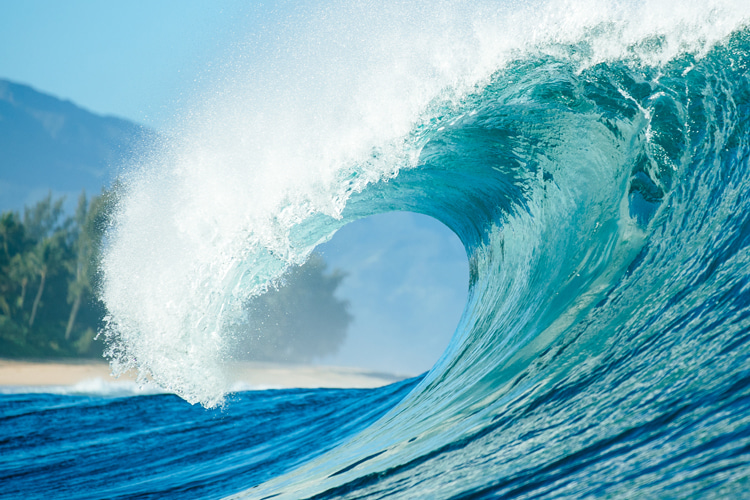
A Heavenly Shaped Reef
The most photographed wave in the world is located at Ehukai Beach Park in Pupukea, on the North Shore of Oahu, Hawaii.
Pipeline works best with WNW-NW swell, at mid-tide, and with light offshore winds, especially from October to March. It starts to be fun at eight feet and becomes unrideable from 20 feet upward.
The waves at Pipeline start to break over a local shallow tabletop reef that rests between six and 10 feet deep.
The reef is sharp and cavernous. There are numerous accounts of surfers who have been trapped inside those snaky tunnels.
These channels that cut through the reef were generated by freshwater runoff from the Pākūlena Stream. The most visible one is the Ehukai channel.
The Pipeline surf zone comprises three reef structures that produce rideable waves as the swell increases - the farther out to sea, the deeper the water.
The First Reef is a 15,000-year-old limestone plateau broken up by a few narrow crevasses, covered by carbonate rock (not lava), black basaltic rock, coral, and turf algae, and located less than 75 yards offshore.
It's the main Pipe break. The A-frame-shaped peak opens a left-hand tube that runs eastward for around seven seconds and ends in a sand bottom area.
The iconic Pipeline barrels only blossom in perfect conditions around seven days a season. It's also important to stress that sand deposits at First Reef affect wave quality more than you'd expect.
The Second Reef is located 75 yards out from the regular Pipeline lineup. It is only activated when the surf hits 10 or 12 feet.
The breaking of the waves here is relatively gentle and mushy, allowing surfers to take off early and prepare for the First Reef entry.
The Third Reef rarely comes to life. It's located 300 yards from the beach, and when it does wake up, it's a massive tow-in wave.
Although mainly a challenging left-hand wave, Pipeline presents two options whenever a surfer goes right.
The first is Backdoor, which opens up with an N/NW swell, and the other one is Off-the-Wall, a right-hand break located just down the beach to the west.
The safest channel for getting to the Pipe lineup faster is located on the right side of the wave.
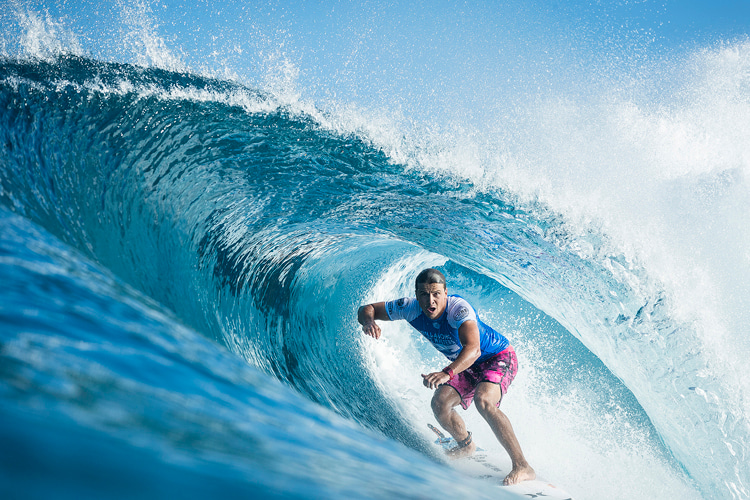
First Ridden in 1960
The first surfer to paddle out at Pipeline was Fred Hemmings. In 1960, aged 15, he tried his luck at the empty lineup but took a beating on the single wave he caught.
California surfer Phil Edwards is widely regarded as the first-ever person to successfully take on the four-foot waves of the then-called Banzai Beach in mid-December 1961.
In the following morning, Edwards returned to the newly discovered surf spot with filmmaker Bruce Brown. The surfer rode an eight-foot wave that was shot and featured in the 1962 surf movie "Surfing Hollow Days."
Surfboard shaper Mike Diffenderfer suggested Bruce Brown name the spot Pipeline because the waves looked like the massive concrete pipes stored in a nearby construction project.
The Hawaiian surf spot broke into the mainstream when The Chantays' 1963 hit "Pipeline" instrumental song reached #4 on the Billboard Hot 100 charts.
The first surfer to ride Second Reef and Third Reef was Greg Noll in 1964.
The title term "Mr. Pipeline" was first given to Butch Van Artsdalen, one of the pioneer tube riders at the infamous North Shore surf break.
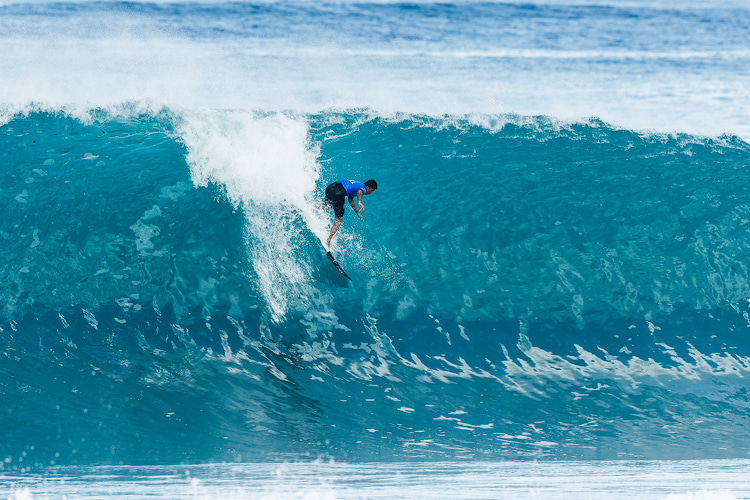
A Pipe Masters Arena
The Pipeline Masters is a yearly competition run since 1971. Its first champion was Jeff Hakman, a regular footer.
According to surf historian Matt Warshaw, Fred Hemmings, the founder of the Pipe Masters, arrived at the beach for the first day of competition "with a card table and a clipboard, a roll of cheap plastic flag bunting, a megaphone that he plainly didn't need, and six metal folding chairs for the judges."
Gerry Lopez is often considered the most influential Pipeline surfer of the 1970s and 1980s. His style, flow, technique, and poise defined an era and inspired future generations.
The most successful Pipe Master is Kelly Slater, with eight titles at the prestigious competition (1992, 1994, 1995, 1996, 1999, 2008, 2013, and 2022).
The first woman to be crowned a Pipe Master was Moana Jones Wong in 2022.
Only one European claimed the prestigious event. It was the French surfer Jeremy Flores. And he won it twice.
The world's ultimate surfing wave claimed the lives of 11 surfers. Joaquin Miro Quesada was the first.
In 1967, the Peruvian hit the reef, broke his neck, and died a few hours later. Hundreds have suffered mild to serious injuries since the spot has been ridden.
The list of fallen surfers at Pipeline include:
- Joaquin Miro Quesada (March 5, 1967);
- Dan Gora (N.A.);
- Andy Chuda (March 25, 1989)
- Travis Musselman (March 20, 2000)
- Moto Watanabe (January 19, 2004)
- Jon Mozo (February 9, 2005)
- Malik Joyeux (December 2 2005)
- Joaquin Velilla (January 12, 2007)
- Joshua Nakata (March 16, 2008)
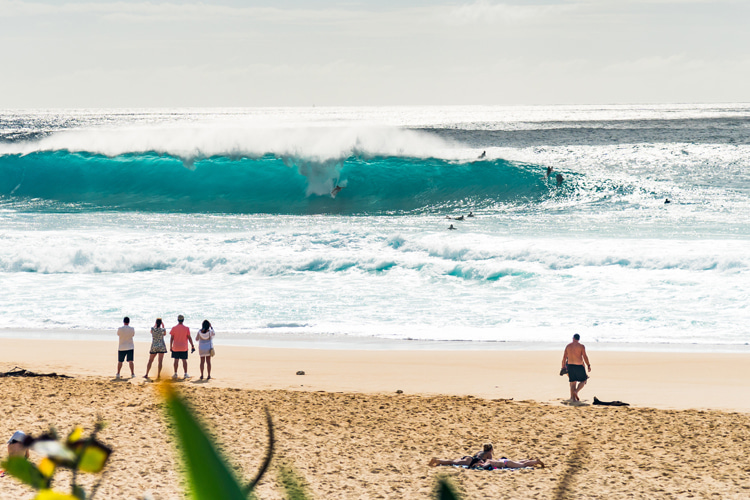
The Mecca of Surfing
On January 5, 1985, Alec "Ace Cool" Cooke jumped from a helicopter into Third Reef and rode a 35-40-foot plus Pipeline wave.
In the 1970s and 1980s, the informal “surf police” group Hui O He'e Nalu dominated the Pipe lineup, making sure haoles respected the local rules. Later, more "law enforcement" crews populated the peak, including Wolfpak and the Pipeline Posse.
In 1992, singer-songwriter Jack Johnson wiped out at Pipeline and got seriously injured. He spent the two-month recovery period improving his guitar-playing skills before becoming a platinum-selling artist.
Pipeline is also one of the best bodyboarding waves on the planet. Multiple-time world champion and bodysurfer Mike Stewart is probably the best-ever bodyboarder at North Shore's killer wave.
Bodysurfing virtuoso Mark Cunningham was one of the greatest at Pipe, winning almost every contest at this tube paradise. He worked as a lifeguard at Ehukai Beach Park from 1976 to 2005.
The 2012 ASP World Tour champion Joel Parkinson is the first and only surfer to score a Perfect 20 heat at Pipeline. It happened in Round 3 of the 2008 Pipe Masters.
The most famous wave in the world has been featured in hundreds of movies, documentaries, and videos, including "Ride the Wild Surf" (1964) "The Endless Summer" (1966), "Blue Crush" (2002), "Step Into Liquid" (2003), and "Riding Giants (2004).
Banzai Pipeline is also the home of the Hawaiian Water Patrol and the arena where inevitable names like Derek Ho, Rory Russell, Tom Carroll, Johnny "Boy" Gomes, Andy Irons, Bruce Irons, John John Florence, and Jamie O'Brien rose to glory.
Have you ever dreamed of moving in? The price of the houses overlooking the surf at Banzai Pipeline ranges between $1-5 million.
